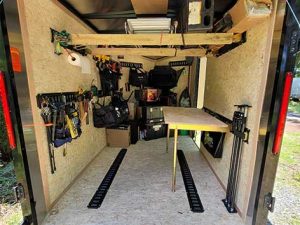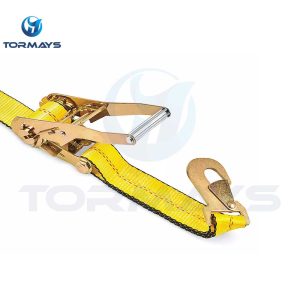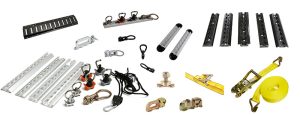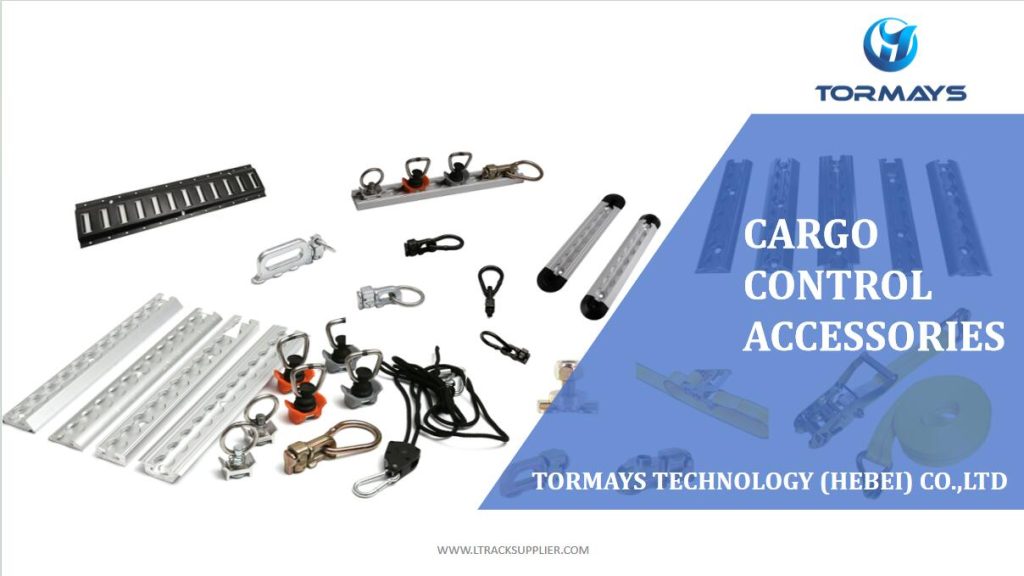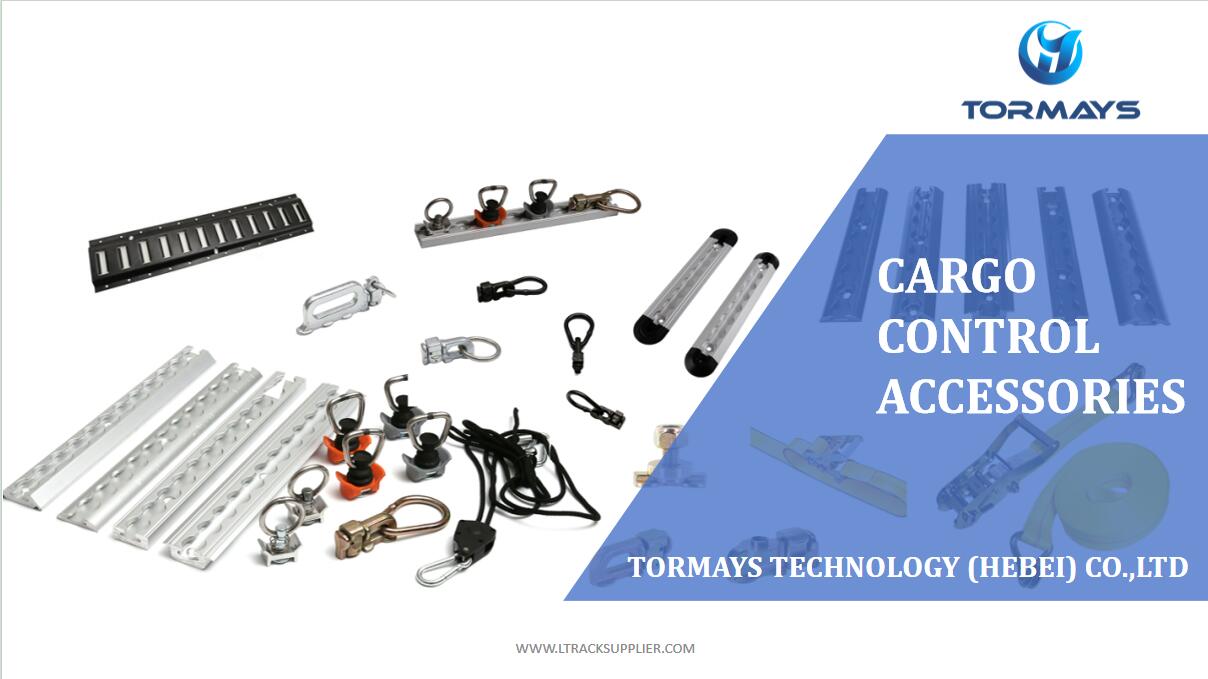Managing cargo safely and efficiently can be challenging, especially for truckers, movers, and warehouse operators. This is where E-Track rails come into play! Designed to secure freight and organize storage spaces, E-Track systems are essential for trucks, trailers, vans, and even warehouses. In this post, we’ll walk you through everything you need to know about using E-Track, including installation tips, applications, accessories, and best practices for maximizing its benefits.
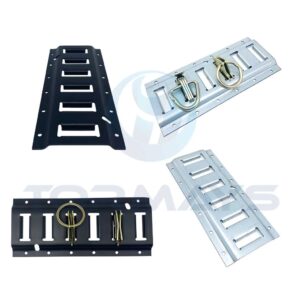
What is an E-Track System?
An E-Track rail is a cargo control rail used to secure loads during transportation or organize equipment in storage spaces. This modular system, commonly made from aluminum or steel E-Track rails, provides multi-point anchoring options for cargo straps, hooks, and other accessories. It’s a go-to solution for truck trailers, moving vans, and warehouse storage systems because of its heavy-duty load capacity and versatility.
Types of E-Track Rails
When setting up an E-Track system, it’s essential to understand the two main types:
1. Horizontal E Track: Runs parallel along the walls or floor of trailers or storage areas. This is ideal for securing wide or large cargo items.
2. Vertical E Track: Installed vertically along walls, perfect for stacking loads or organizing equipment in tight spaces like enclosed trailers and van interiors.
Both versions are available as heavy-duty E Track options for increased durability. Choosing between aluminum E Track rails and steel E Track rails depends on your need for weight savings versus strength.
How to Install E-Track Rails Correctly
A properly installed E-Track system ensures secure cargo transport and avoids accidents. Follow these simple steps to get it right:
1. Measure and Plan: Determine where you want to mount the E Track mounting rails—on the floor, walls, or ceiling. Plan whether you need horizontal or vertical E Track rails based on the cargo size and type.
2. Gather Tools: You’ll need a drill, screws, and mounting brackets. Make sure your hardware matches the load you expect to carry.
3. Install the E Track Rails: Secure the E Track tie-down rail by screwing it into the truck, trailer, or wall frame. For heavy-duty E Track, use additional brackets to prevent bending.
4. Test the System: After installation, apply some force to ensure the rails are properly fastened. This will guarantee the rails can handle adjustable E Track systems and accessories without issues.
Essential E-Track Accessories
The beauty of the E-Track system lies in its wide range of accessories and components. Here are the must-have items:
– E Track straps: These straps secure your cargo to the rails. You can choose between ratchet straps for E Track (for extra-tight fastening) or cam buckle straps for E Track (for quick adjustments).
– E Track anchors: These provide anchor points for additional tie-downs or hooks.
– E Track hooks: Used for hanging equipment, tools, or other items inside van interiors or trailers.
– D-rings for E Track: Essential for attaching ropes or bungee cords to secure irregular loads.
– E Track tie-down straps: Specifically designed to stabilize heavy cargo during transport.
How to Secure Cargo with E-Track Rails
Properly securing freight is critical for cargo management systems. Here’s a step-by-step guide to ensure your cargo stays safe during transit:
1. Attach E Track Anchors or D-Rings: Start by inserting D-rings for E Track at points along the rail where you want to secure your load.
2. Position the Cargo: Place your cargo tightly against the walls or floor to prevent movement.
3. Use E Track Tie-Down Straps: Loop E Track straps through the anchor points and secure them tightly. Use ratchet straps for heavy loads or cam buckle straps for lighter items.
4. Double-Check the Load: Ensure all straps are tight and the cargo doesn’t shift when you apply force. For large or stacked loads, consider using both horizontal E Track and vertical E Track rails for extra stability.
Applications of E-Track Rails
E-Track systems offer unmatched versatility across various industries. Here are the most common applications:
1. Truck Trailer E Track
– Truckers use E Track tie-down rails to secure cargo and prevent loads from shifting during transport.
– Heavy-duty E Track rails are essential for long hauls with heavy cargo.
2. Van Interior E Track Rail
– Perfect for organizing tools and equipment.
– E Track hooks allow you to hang gear neatly, while D-rings provide additional tie-down points.
3. Warehouse Storage Track
– Used to organize and store goods securely.
– Adjustable E Track systems let you move components as needed for different storage configurations.
4. Moving Truck Tie-Down System
– Essential for keeping furniture and other items secure during moves.
– E Track tie-down straps prevent items from shifting and getting damaged.
5. Enclosed Trailer E Track
– Ideal for securing motorcycles, ATVs, or other equipment.
– Both horizontal E Track and vertical E Track systems ensure optimal load stability.
Best Practices for Using E-Track Rails
Follow these tips to get the most out of your E-Track system:
– Distribute the Load Evenly: Avoid overloading one section of the rail to prevent damage.
– Inspect Straps Regularly: Check for wear and tear on E Track tie-down straps and replace them if needed.
– Use Multi-Point Anchoring: Utilize multiple D-rings or E Track anchors to ensure the load remains balanced.
– Adjust the System as Needed: Take advantage of adjustable E Track systems to modify your setup based on the cargo size or type.
Why E-Track Systems are Essential for Secure Cargo Transport
Whether you’re a trucker, mover, or warehouse operator, an E-Track system offers several advantages:
– Heavy-duty load capacity: Handles large and heavy items with ease.
– Easy-to-install E Track: Quick setup with minimal tools required.
– Versatile cargo rail: Works for various applications, from freight to tool storage.
– Modular design: Allows you to customize the system based on your needs.
With the right setup and accessories, E Track rails ensure secure cargo transport and organized storage solutions for any environment.
Conclusion: Make the Most of Your E-Track System
Using E-Track rails properly can make a huge difference in the safety and efficiency of your cargo management efforts. Whether you’re hauling heavy freight, organizing your van, or setting up a warehouse storage track, following the right practices will help you get the most out of this modular E Track system.
Investing in high-quality E Track straps, anchors, hooks, and D-rings will further enhance the performance of your setup. With E-Track systems, you’ll not only ensure secure cargo transport but also maintain a neat, organized workspace.

